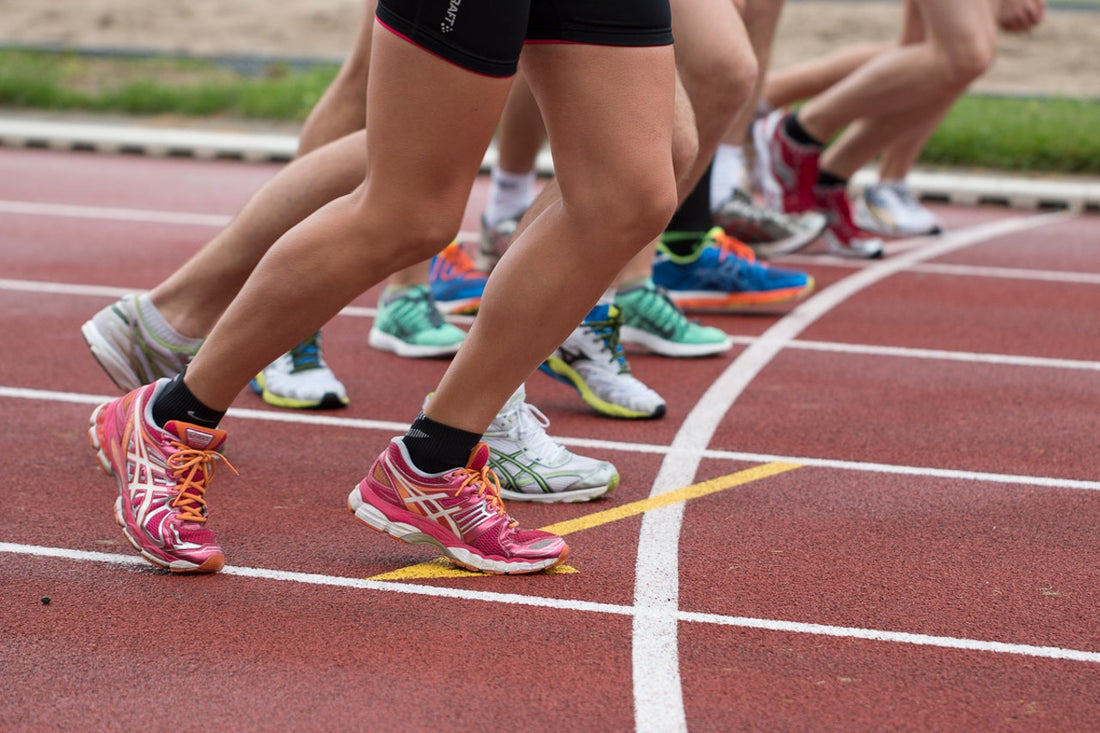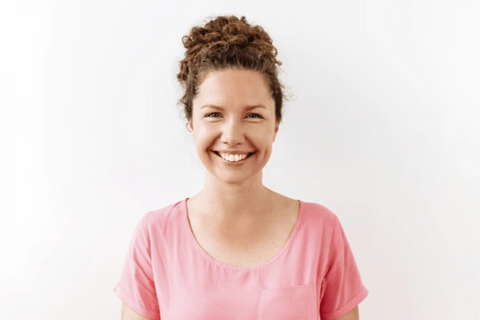Whether you’re a regular runner or someone new to running, this question must have come to your mind; Which running shoes are better: Lightweight or heavyweight? The answer is not that simple.
Lightweight shoes like Loom sneakers are usually more flexible and breathable than heavy ones, but heavyweight shoes can also be more supportive and comfy. What do you think?
Shoes’ speed depends on many elements that we’ll discover through this article. Let’s dive in!
What Do Scientific Studies Show?
Researches have shown that even lightweight shoes can hurt the muscles if they are not the right pick. One such research included a study that was based on shoe weight vs athletic performance.
The researchers focused on adding and subtracting weights off the runners’ shoes. They found out that when the shoes weighed less than a certain point – the threshold point, the runners’ muscles faced more stress to compensate.
This goes to show how important the weight of the shoes can be in your physical performance, especially running. So, if you’ve been facing a hard time meeting your running targets, this post will help you choose the right pair of shoes to make a noticeable difference.
Here, we will thoroughly discuss how lightweight running shoes are different from heavyweight shoes. We will also look for the right answer if there is any.
|
Lightweights |
Heavyweights |
|
Lesser cushioning |
Heavier cushioning |
|
Faster |
Comparatively slow |
|
Super-breathable |
Comparatively less breathable |
|
Smooth heel-to-toe slope |
Steeper heel-to-toe slope |
You’ve probably heard of the word momentum, which is the product of mass and velocity. Do a bit of math, and you’ll find out that momentum establishes an inverse relationship between the mass and velocity of an object.
The higher the mass, the lower the velocity, and vice versa. This is what most runners think when choosing between their pair of shoes.
But, it’s not as simple as it looks; there’s more to it.
What we fail to notice is that a higher velocity implies higher kinetic energy. Theoretically, the higher kinetic energy would require as much of a muscular force to stop the flow of the energy. This energy comes from muscles, but in the longer run, this can also damage the muscles.
The other variable in momentum is the mass. A higher mass would require considerable power to accelerate. But once accelerated enough, the acceleration will become fairly constant (not in terms of pure physics, in general).
4 Things To Consider When Buying Running Shoes.

1- It’s About the Distance
Keep in mind that heavyweight shoes will need more time to pick velocity than lightweight shoes. However, the positive side is that they make sharp turns and sudden breaks easier. Also, they would not stress the muscles.
Consider a truck. It’s heavy and develops velocity slowly. Once it attains the right momentum, it becomes difficult to stop without strong force. The same is the case with heavyweight running shoes.
Once you gain speed, you keep the momentum and don’t have to exert extra force. This way, your muscles are less compromised.
On the other hand, lightweight flexible shoes have their own advantages. They’re great for short runs where you have to develop speed in less time. You might have to put in the extra effort, but once you are in the loop, you won’t feel a thing.
2- Heel-Toe Slope
We all know how important heel to toe slope/angle is.
Now, heavier shoes have more overlays than lightweight running shoes. These increased number of overlays give a more angled heel to toe slope.
A steeper heel-toe slope implies that when you hit the ground during a run, it’s the heel that strikes first. This can be painful. A heel striking the ground first produces a braking effect, overall slowing you down and causing heel problems in a longer run.

Lightweight and flexible shoes, on the other hand, have a heel-toe slope that is gentler and encourages natural running gait. The lighter the shoes are, the stronger the sensation of running barefoot will be.
Instead of heels touching the ground, it’s the middle of the foot that gives you that extra time to change feet and move faster.
You may be wondering, why?
Even though the angles matter very much, it still depends on how much energy conversion a shoe can perform. Also, how much downward energy can be converted to propulsion (the ability to move forward).
Every form of running depends on this energy conversion. The part of the shoe striking the ground is important, too.
Theoretically, the less the rear shoe strikes the ground, the more the downward energy converts to propulsion — hence the fact why sprinters run on their toes. It's all in Physics!
Elevate Your Run with Loom's Ultra-Lightweight Running Shoes - Feel the Difference!
3- The Surface and Slope
The running surface and the slope are also very important.
Say that the running track offers a gradual upward slope. The recommended shoes would be lightweights since we want to convert maximum force into forwarding propulsion — all that without compensating much energy on lifting the shoes off the ground.

However, if the track offers a gradual downward slope, the preferable ones are the heavyweights since we want to have a controlled speed. The braking effect of heavyweights shoes can be of an advantage here.
Heavy shoes can also be great on downward slopes because of momentum. The heavier mass gives you an extra boost in momentum, and that can't be possible with the lightweight alternatives.
Lightweight shoes don’t put extra weight on you. So, to build momentum, you would require consistent muscular energy to push your body weight forward.
With heavyweight options, the difference is, you get to work harder initially to push your body weight as well as the weight of the shoes. Once you achieve the higher speed, you get that extra momentum and boosting chances.
A path that offers both downward and then upward slope can be tricky. In such a case, it all depends on the runner himself. Both lightweights and heavyweights can be used.
Heavyweights will allow you to develop momentum during downslope. You can use this momentum to climb the positive slope.
In contrast, lightweights won't develop much momentum. They will, however, be useful in easy climbing of the upward slope.
Hence in such a case, it breaks down to the runner's training, his muscles, and his choices.
Talking about surfaces, we highly recommend a pair of waterproof sneakers too. Rain is unavoidable when you’re a frequent runner, and waterproof sneakers like Loom are adapted to rainy conditions and won’t let you slip or get sick!
4- Running Form, Style, and Comfort
The form, overall posture, previous experiences, injuries, and running surfaces matter a lot.
One thing that affects the running experience and ease is the shoe’s comfort. A runner’s basic need is appropriate cushioning and comfort in his shoes.
Lightweight shoes are generally made by cutting down the cushioning and the majority of the protection it provides to the feet.

Whereas heavyweights are heavy because they are highly equipped with cushioning. So, the primary concern here would be the amount of cushioning you would like.
For example, if a runner that is used to heavier shoes wants to switch to lighter ones for the speed, he should start with sneakers that are a little bit lightest than the ones he used to have. Then, he can gradually step down to lighter versions and his body and muscles have the time to adapt.
The opposite can be done when switching to heavyweight alternatives that are metabolically demanding. A self-experiment to check this fact can be performed very simply.
- Wear some heavyweight shoes.
- Go for a routine run.
- Check your heart rate and blood pressure after you’re done.
You will find that your body generated more heat. Your heart rate increased more than normal, and so did your blood pressure.
The fact that these shoes are metabolically demanding can be advantageous too. Say, you have an upcoming marathon in a month, and you start preparing just now.
What if the Training Style is Changed?
As training is used to make things harder, when you face the real deal, you are more than ready.
Keeping this in mind, try to make things harder for yourself when training. How about you wear heavyweights during all your training sessions?
This way, not only can you train your muscles into becoming stronger and directing more propulsion, but also, you will train your stances for the correct propulsion using the heel-toe slope of the heavyweights.
You can learn more ways to convert the downward energy into propulsion. Then, when the marathon arrives, you will have an amazingly developed form, style, propulsion, and of course, muscles.
Go for the lightweights and you will feel like floating with the wind since the lightweights are already designed to give you a boost. With the already trained boost, this can up your game.
Final Word
In conclusion, wearing lightweight or heavyweight shoes highly depends on your intentions. It's not just the weight that comes into action while running; the form, style, archangels, shoes' angles, they all work together in harmony with each other.
If you have more of a flat foot and you plan to go for lightweights, know that lightweights have less arch support than heavyweights. However, you should not go for too heavy shoes as well.
Look for the perfect balance, not too light, not too heavy. Some good examples are Loom sneakers.
So, next time when you are choosing footwear, don't just go for the lightest. Consider all things you could face or have faced. For example, the track, your form, your grip, control, your energy, and the features of the shoes.
Perhaps the design of your feet demands something different than what you are looking for? Who knows? Only you!




